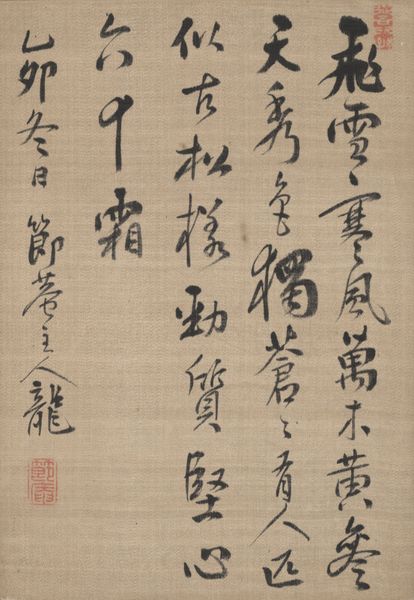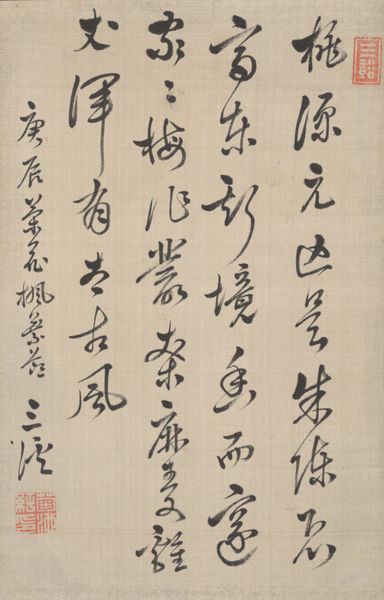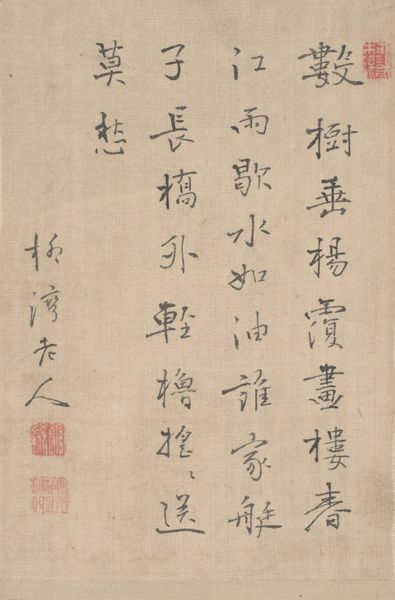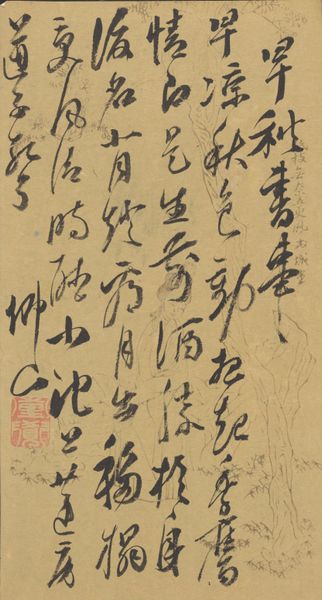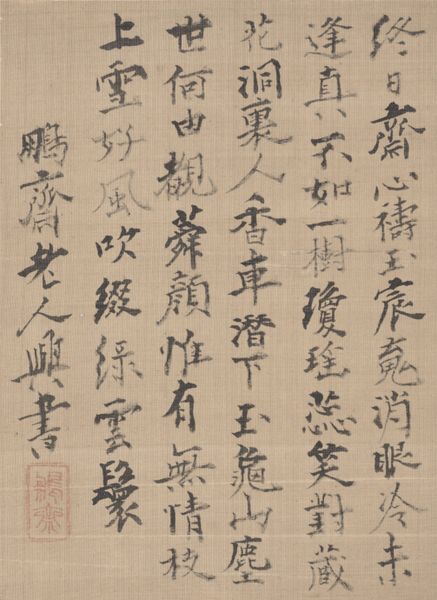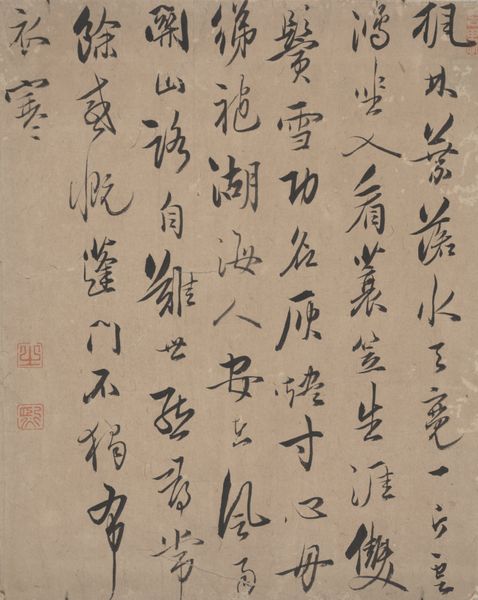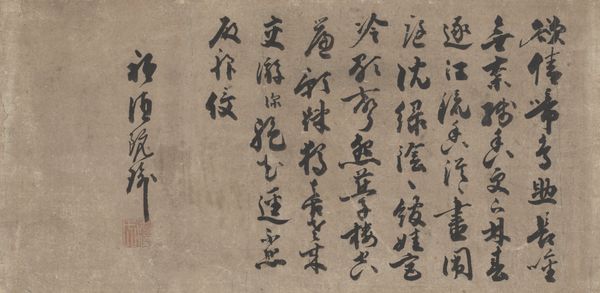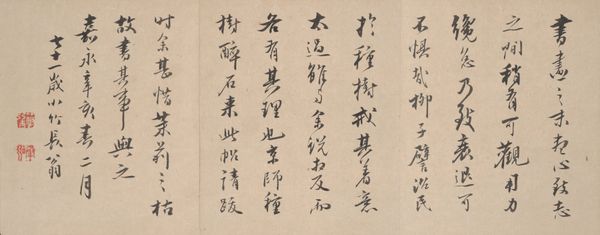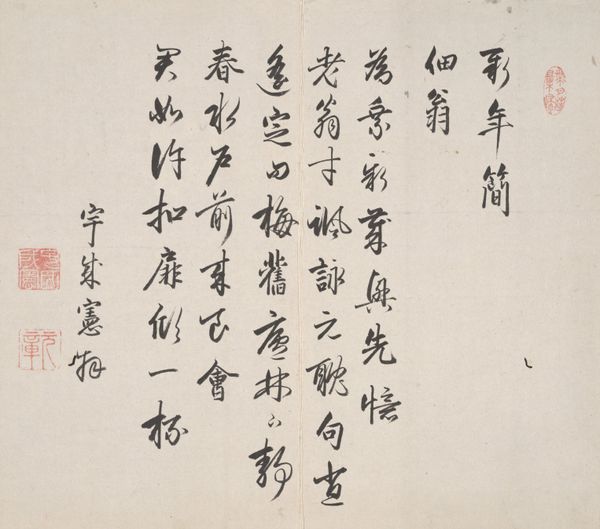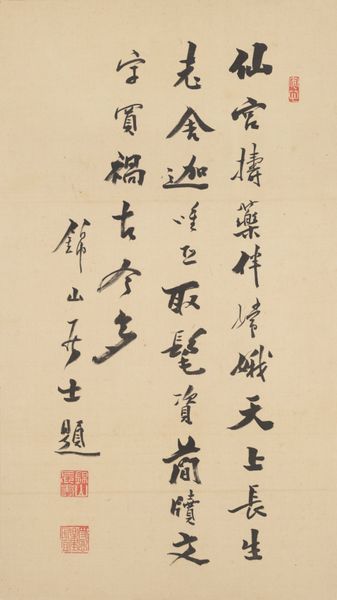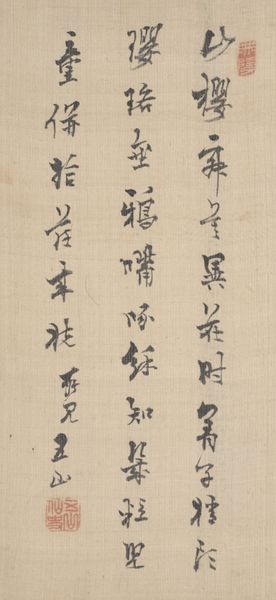
paper, ink-on-paper, ink
#
asian-art
#
paper
#
ink-on-paper
#
ink
#
calligraphic
#
calligraphy
Dimensions: 8 7/8 × 6 15/16 in. (22.54 × 17.62 cm)
Copyright: Public Domain
Nakagawa Kensai created this calligraphy on paper in Japan during the 19th century. Calligraphy was more than just writing; it was a respected art form deeply connected to Zen Buddhism and Confucian ideals, emphasizing self-cultivation and moral character. Here, Kensai employs the cursive script, a style valued for its expressiveness and spontaneity. The brushstrokes dance across the paper, reflecting the artist's inner state and mastery of technique. Consider that this work was produced during the Edo period, a time of relative peace and prosperity under the Tokugawa shogunate. Institutions like the Kano school standardized artistic training, while patronage from the samurai class supported artistic endeavors. Could Kensai's calligraphy be seen as a subtle commentary on the rigid social hierarchies of his time, or is it a celebration of traditional values? By exploring the historical context and cultural references, we gain a richer understanding of the art's significance. Through careful study of period texts and artistic practices, we can reveal the layers of meaning embedded within the artwork.
Comments
No comments
Be the first to comment and join the conversation on the ultimate creative platform.
